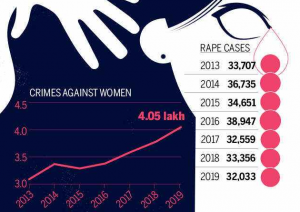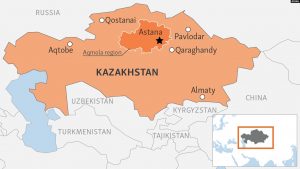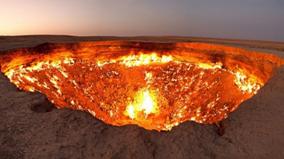THE POLITY AND GOVERNANCE
1. RAPE PUNISHABLE BUT MARITAL RELATIONSHIP IS DIFFERENT: HC
THE CONTEXT: According to Delhi high court, “there is no compromise with a woman’s right to sexual and bodily integrity. A husband has no business to compel. (But) the court can’t ignore what happens with we knock it (marital rape exception) off.
THE EXPLANATION:

- The Delhi High said that while there can be no compromise with women’s right to sexual autonomy and any act of rape has to be punished, there is a “qualitative difference” between a marital and a non-marital relationship as the former entailed a legal right to expect reasonable sexual relation from the spouse and it played a part in the marital rape exemption in criminal law.
- The criminalisation of marital rape orally observed that a non-marital relation, no matter how close, and a marital relationship cannot be “parallelised”.
- The court questioned as to why the exception from the offence of rape granted to a married couple had remained in the legislature for several years in spite of developments suggesting the contrary and remarked that “one of the possible reasons” was the wide scope of Section 375 of Indian Penal Code which included even a single act of “unwilling sex” as rape.
- “When a party gets married, there is a right – it can lead to divorce — a legal right to expect a normal, reasonable sexual relationship with your partner. That qualitative difference has a part to play in the exception,” clarifying that he was neither expressing his final opinion on the petitions nor examining “whether marital rape should be punished” at this stage.

THE INTERNATIONAL RELATIONS
2. THE PROTESTS IN KAZAKHSTAN
THE CONTEXT: The 2022 new year saw protests in yet another unexpected place: Kazakhstan in Central Asia. Although ruled by autocratic regimes since the USSR’s disintegration, it is unexpected because Kazakhstan is the richest Central Asian Republic and is thought to be one of the more stable of these republics.
REASONS FOR UNREST:
The protests began when the ruling government of Kazakhstan lifted the price controls of Liquified Petroleum Gas. The prices quickly doubled after the lift. Earlier, because of its low price, the citizens had converted their vehicles to run on the fuel. Their plans shattered due to sudden price hike after the price control was lifted. This angered them and they started protesting.
The situation in Kazakhstan is a classic case of the dilemma of transfer of power in strongman regimes, something which resonates in Russia as well. The protests have not ended despite the resignation of the Government and the removal of the unpopular Nursultan Nazarbayev as chairman of the country’s Security Council. He was also the former President who ruled the country for 28 years.
What is in the protest for Russia?
Around 20% of the Kazakhs are ethnic Russians. Baikonur Cosmodrome of Kazakhstan is used as launch base for all Russian manned space missions.
How Kazakhstan control the protest?
After the Prime Minister of the country resigned, the president has taken over responsibility. He has created a security council to control the protest. Kazakhstan has sought help from its military allies, especially Russia. It has also sought the help of CSTO (Collective Security Treaty Organization). CSTO comprises of Russia, Kyrgyzstan, Kazakhstan and Bealrus.
Demands for democracy:
- There has been a growing discontent among Kazakhs over risingincome inequality and the lack of democracy.
- The authoritarian government has been widely criticised over the years for violating fundamental freedoms.
- For instance, during the presidential elections of 2019, there were widespread reports of irregularities.
What is the CSTO?
The CSTO is a Russia-dominated security alliance (Russia contributes 50% of its budget) which was established after the USSR’s fall when some members of the Commonwealth of Independent States (CIS) signed a mutual defence treaty named the Collective Security Treaty. Meant as a replacement for the Warsaw Pact, the Treaty came into force in 1994. In 2002, it became the CSTO. The CSTO has six members today: Russia, Tajikistan, Kyrgyzstan, Armenia, Belarus, and Kazakhstan.
The organisation is based, as the name indicates, on the principle of collective security or the idea of “one for all and all for one”. Essentially, this means that an aggressor against any one state in the organisationis considered to be an aggressor against all other states. So, all the members would act together to repel the aggressor.
BACKGROUND:
Kazakhstan is an oil rich country. It has huge foreign investments mainly because of its oil. It had a strong economy since its independence (after disintegration of Soviet Union). However, its autocratic form of governance has raised international concerns. The political rifts between the ruling and opposition creates the unrest. And the authorities often crack down due to the internal protests. Such conditions are always around oil issues. Oil is used as weapon to capture power.

THE ENVIRONMENT AND ECOLOGY
3. GHAZIABAD MOST POLLUTED CITY: NCAP REPORT
THE CONTEXT:According to the three-year comparative analysis, Ghaziabad, with annual PM 2.5 level above 100, remained at the top of the table in the most polluted cities, except in 2020, when Lucknow ranked first with an annual PM 2.5 level of 116.
THE EXPLANATION:
- The analysis by NCAP Tracker, a joint project by news portal ‘Carbon Copy’ and a Maharashtra-based start-up ‘Respirer Living Sciences’, designed to track India’s progress in achieving the clean air targets set under the NCAP, ranked Ghaziabad in Uttar Pradesh as the most polluted city out of the 132 non-attainment cities listed under the NCAP with highest levels of PM 2.5 and PM 10.
- Delhi was the second most polluted city in the list of cities with the highest PM 2.5 level and fourth in cities with the highest PM 10 level. Despite the constant focus on the air pollution woes of the Capital city, Delhi reduced its PM levels only marginally.
- A non-attainment city is one whose air did not meet the national ambient air quality standards of 2011 to 2015. The National Clean Air Programme (NCAP) was launched for such cities, seeking to bring a 20-30 per cent reduction in pollution levels from PM2.5 and PM10 particles by 2024, using 2017 pollution levels as a base. The goal is non-binding.
Other Cities:
- Varanasi was able to achieve the largest reduction in air quality levels (52 per cent in PM2.5 levels and 54 per cent in PM10 levels). The only other cities to achieve an at least 20 per cent reduction were Hubli, West Bengal (42 per cent in PM2.5 levels and 40 per cent in PM10 levels), and Talcher, Odisha (20 and 53 per cent respectively).
- Ahmedabad recorded a reduction of 26 per cent in PM10 levels. However, Navi Mumbai’s PM2.5 levels increased to 53 micrograms per cubic metre from 39, and PM 10 levels increased to 122 from 96 compared to 2019.
- None of the 132 cities, however, attained the national annual safe limits for particulate matter. Currently, the annual safe limit is 40 micrograms per cubic metre for PM2.5 and 60 micrograms per cubic meter for PM10.
- Additionally, of the 132 cities, only 36 cities had data from 2019 and 2021 with an “uptime” of 50 per cent, meaning the systems were running 50 per cent of the time.
About the National Clean Air Programme:
Launched by the Union Ministry of Environment, Forests and Climate Change in 2019. It was not notified under the Environment Protection Act or any other Act.
Goal
Goal of NCAP is to meet the prescribed annual average ambient air quality standards at all locations in the country in a stipulated timeframe. The tentative national level target of 20%–30% reduction of PM2.5 and PM10 concentration by 2024 is proposed under the NCAP taking 2017 as the base year for the comparison of concentration.
Objectives
- To augment and evolve effective and proficient ambient air quality monitoring network across the country for ensuring comprehensive and reliable database
- To have efficient data dissemination and public outreach mechanism for timely measures for prevention and mitigation of air pollution and for inclusive public participation in both planning and implementation of the programmes and policies of government on air pollution
- To have feasible management plan for prevention, control and abatement of air pollution.
Approach
- Collaborative, Multi-scale and Cross-Sectoral Coordination between relevant Central Ministries, State Government and local bodies.
- Focus on no Regret Measures, Participatory and Disciplined approach
Who will all participate?
Apart from experts from the industry and academia, the programme will be a collaboration between the Ministry of Road Transport and Highways, Ministry of Petroleum and Natural Gas, Ministry of New and Renewable Energy, Ministry of Heavy Industry, Ministry of Housing and Urban Affairs, Ministry of Agriculture, Ministry of Health, NITI Aayog, and Central Pollution Control Board.
4. RED SANDERS FALLS BACK IN IUCN’S ‘ENDANGERED’ CATEGORY
THE CONTEXT:Red Sanders (Red Sandalwood) has fallen back into the ‘endangered’ category in the International Union for Conservation of Nature’s (IUCN) Red List. The species, Pterocarpus santalinus, is an Indian endemic tree species, with a restricted geographical range in the Eastern Ghats.

THE EXPLANATION:
- The species is endemic to a distinct tract of forests in Andhra Pradesh. It was classified as ‘near threatened’ in 2018 and has now joined the ‘endangered’ list once again in 2021.
- It was a moment of celebration when the species was lifted off from the endangered category for the first time since 1997.
- The latest IUCN assessment stated: “Over the last three generations, the species has experienced a population decline of 50-80 per cent. It is assessed as Endangered”.
- The IUCN maintains a list — called the Red List — of flora and fauna species and categorises them based on their conservation status.
Value Addition:
- Pterocarpus santalinus known for their rich hue and therapeutic properties, are high in demand across Asia, particularly in China and Japan, for use in cosmetics and medicinal products as well as for making furniture, woodcraft and musical instruments.
- Its popularity can be gauged from the fact that a tonne of Red Sanders costs anything between Rs 50 lakh to Rs 1 crore in the international market.
- The slow growth of the species and continued harvesting leaves no time for the species to recover naturally. Cattle grazing and invasive species also threaten the species.
- It is listed under Appendix II of CITES and is banned from international trade. The harvest of the tree is also restricted at the state level, but despite this illegal trade continues.
- “The over-harvest of the species has left the population structure skewed, with trees of harvestable size and maturity being scarce and making up less than 5 per cent of the trees remaining in the wild”.
THE SCIENCE AND TECHNOLOGY
5. CHANG’E 5 LUNAR PROBE FINDS FIRST ON-SITE EVIDENCE OF WATER ON MOON
THE CONTEXT: China’s Chang’e 5 lunar lander has found the first-ever on-site evidence of water on the surface of the moon, lending new evidence to the dryness of the satellite.
KEY FINDINGS:
- A study published in the peer-reviewed journal Science Advances revealed that the lunar soil at the landing site contains less than 120 parts-per-million (ppm) water, or 120 grams water per tonne, and a light vesicular rock carries 180 ppm – much drier than rocks on Earth.
- The presence of water had been confirmed by remote observation but the lander has now detected signs of water in rocks and soil.
- A device on-board the lunar lander measured the spectral reflectance of the regolith and the rock and detected water on the spot for the first time.
- According to the Xinhua news agency reported, the water content can be estimated since the water molecule or hydroxyl absorbs at a frequency of about three micrometers, citing researchers from the Chinese Academy of Sciences (CAS).
- According to the researchers, it was the solar wind that contributed to the most humidity of lunar soil as it brought hydrogen that makes up the water.The additional 60 ppm water in the rock may originate from the lunar interior.
- Therefore, the rock is estimated to hail from an older, more humid basaltic unit before being ejected onto the landing site to be picked up by the lunar lander. The study revealed that the moon had turned drier within a certain period, owing probably to the degassing of its mantle reservoir.
ABOUT CHANG’E-5 PROBE
The objective of the mission was to bring back lunar rocks, the first attempt by any nation to retrieve samples from the moon in four decades.
It is an unmanned spacecraft by China. The probe is named after the mythical Chinese moon goddess.
| · The rocket comprises four parts: an orbiter, a returner, an ascender and a lander.
· The Chang’e-5 mission is expected to realize four “firsts” in China’s space history: · The first time for a probe to take off from the surface of the Moon. · The first time to automatically sample the lunar surface. · The first time to conduct unmanned rendezvous and docking in lunar orbit.
|
- Chang’e-5 was the first lunar sample-return mission since the Soviet Union’s Luna 24 in 1976. The mission made China the third country to return samples from the Moon after the United States and the Soviet Union.
- The findings provide more clues to China’s Chang’e-6 and Chang’e-7 missions. The investigations of lunar water reserves come into the limelight as the building of manned lunar stations are in the pipeline in the next decades.
THE INTERNAL SECURITY
6. DISTURBED AREA’ STATUS EXTENDED FOR ONE YEAR IN MANIPUR
THE CONTEXT:Amid the growing public demand for repealing AFSPA following the December 4,2021 incident in Nagaland’s Mon district, the government of Manipur has extended the disturbed area status in the state for one year.
THE EXPLANATION:
- According to the Government, the entire state of Manipur is in such a disturbed condition that the use of armed forces in aid of civil power is necessary and is of the opinion that the areas within the state be declared as a “Disturbed Area” under the provisions of the Armed Forces (Special Powers) Act, 1958.
- “In exercise of the powers conferred by Section 3 of the Armed Forces (Special Powers) Act, 1958 (Act No.28 of 1958) as amended from time to time, the Governor of Manipur hereby accords ex-post facto approval to declare the entire state of Manipur excluding the Imphal Municipal Area as “Disturbed Area” for a period of 1 (one) year with retrospective effect from December 1, 2021.
- In Nagaland also, the Centre extended the disturbed area status for six months on December 30 in 2021 in-spite of the Nagaland state cabinet resolving against continuation of AFSPA in the wake of the Mon district incident.
What is a “disturbed area” and who has the power to declare it?
- A disturbed area is one which is declared by notification under Section 3 of the AFSPA. An area can be disturbed due to differences or disputes between members of different religious, racial, language or regional groups or castes or communities.
- The Central Government, or the Governor of the State or administrator of the Union Territory can declare the whole or part of the State or Union Territory as a disturbed area.
- A suitable notification would have to be made in the Official Gazette. As per Section 3 , it can be invoked in places where “the use of armed forces in aid of the civil power is necessary”.
- The Ministry of Home Affairs would usually enforce this Act where necessary, but there have been exceptions where the Centre decided to forego its power and leave the decision to the State governments.
THE MISCELLANEOUS
7. TURKMENISTAN PLAN TO CLOSE ITS ‘GATEWAY TO HELL’
THE CONTEXT:Turkmenistan President has ordered experts to find a way to extinguish a fire in a huge natural gas crater, the Darvaza gas crater also known as the ‘Gateway to Hell’.
THE EXPLANATION:

What is the ‘Gateway to Hell’?
The crater is 69 metres wide and 30 metres deep. While the details of the origin of the crater are contested but it has been said that the crater was created in 1971 during a Soviet drilling operation.
Located in the Karakum desert, 260 kilometres away from Turkmenistan’s capital, Ashgabat, the crater has been burning for the last 50 years.
Background:
In 1971, Soviet geologists were drilling for oil in the Karakum desert when they hit a pocket of natural gas by mistake, which caused the earth to collapse and ended up forming three huge sinkholes. This pocket of natural gas contained methane, hence to stop that methane from leaking into the atmosphere, the scientists lit it with fire, assuming the gas present in the pit would burn out within a few weeks.
Although, the scientists seemed to have misjudged the amount of gas present in the pit, because the crater has been on fire for five decades now. As reported by the U.S. Energy Information Administration, “Turkmenistan is one of the five Caspian Sea littoral countries, an area with large volumes of oil and natural gas reserves.”
Why did Turkmenistan’s President order to extinguish it?
- According to the President, it is a human-made crater, “it negatively affects both the environment and the health of the people living nearby”.
- As reported by Reuters, he had also asked the authorities to ensure that it does not hinder the development in the gas field near the crater. “The Existing anomalies have hindered the accelerated industrial development of the subsoil riches of central Karakum”.
According to the International Trade Administration, Turkmenistan produced 63.2 billion cubic meters of gas in 2019. Reuters, in 2010, had reported that the country wanted to triple the output over the next few decades to expand sales beyond Russia, China and Iran and into Western Europe, India and Pakistan.
Reason behind the Fire:
- The soil samples from within the crater to find a sign of “microbial life-forms that are thriving in the hot, methane-rich environment”.
- The scientists were able to find bacteria living amidst the burning crater. “The most important thing was that they were not found in any of the surrounding soil outside of the crater”.
How harmful are methane leaks?
According to the United Nations Environment Programme, “Methane is the primary contributor to the formation of ground-level ozone, a hazardous air pollutant and greenhouse gas, exposure to which causes 1 million premature deaths every year. Methane is also a powerful greenhouse gas. Over a 20-year period, it is 80 times more potent at warming than carbon dioxide.”
THE PRELIMS PRACTICE QUESTIONS
QUESTION OF THE DAY 11TH JANUARY 2022
- Consider the following statements about NCAP:
- It was launched in 2019 to reduce levels of PM 2.5 and PM 10 in certain cities which fail tomeet the National Ambient Air Quality Standards (NAAQS).
- It aims to reduce particulate matter levels in those cities by 20-30% in 2022.
Which of the statements is/are correct?
- a) 1 only
- b) 2 only
- c) Both 1 and 2
- d) Neither 1 nor 2
ANSWER FOR 10TH JANUARY 2022.
Answer: d)
Explanation:
- Statement 1 is correct:Asian Infrastructure Investment Bank (AIIB) is a multilateral development bank headquartered in Beijing.

